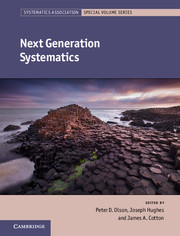 Having noted the recent Quanta news story on how symbiosis with a starlight-mimicking bacterium enables a squid to survive, a friend points out a chapter on orphan and taxonomically restricted genes in Next Generation Systematics (Cambridge University Press 2016) by Richard Buggs and Paul Nelson. There they ventured a prediction: “We suspect that if one’s model system or species of study does something unique and interesting, TRGs [taxonomically restricted genes, aka orphans] will be at least partially responsible, and worth seeking out.”
Having noted the recent Quanta news story on how symbiosis with a starlight-mimicking bacterium enables a squid to survive, a friend points out a chapter on orphan and taxonomically restricted genes in Next Generation Systematics (Cambridge University Press 2016) by Richard Buggs and Paul Nelson. There they ventured a prediction: “We suspect that if one’s model system or species of study does something unique and interesting, TRGs [taxonomically restricted genes, aka orphans] will be at least partially responsible, and worth seeking out.”
Curiously, that’s what the open access PNAS paper seems to show:
“…the ANG [accessory
nidimental gland] of E.scolopes is highly derived and shows an elevated evolutionary accumulation in bothits coding (novel gene formation) and noncoding (turnover of the regulatory sequence) complements. The ANG is a secretory organ within the female reproductive system containing a bacterial consortium that is deposited into the egg capsule and is believed to play a role in defense from fouling and/or pathogens during embryogenesis (7, 8, 15, 16). Taxonomically restricted (i.e., orphan) genes have contributed to the evolution of unique tissues and organs in a number of animals (17⇓–19). Within the two symbiotic organs of E.scolopes (LO and ANG), we profiled protein-coding transcripts that mapped to genome scaffolds from tissue-specific transcriptomes against the National Center for Biotechnology Information’s nonredundant database [using BLASTP (Basic Local Alignment Search Tool – Protein) e-value threshold of 1E-5; Fig. 3A] and classified the transcripts as either E.scolopes -specific, cephalopod, molluscan, bilaterian, metazoan, or premetazoan (SI Appendix, Fig. S8). The ANG had the highest proportion of E.scolopes -specific transcripts (>35%) among all tissues.” [emphasis added] Mahdi Belcaid et al., Symbiotic organs shaped by distinct modes of genome evolution in cephalopods, PNAS February 19, 2019 116 (8) 3030-3035; published ahead of print February 19, 2019 Paper https://doi.org/10.1073/pnas.1817322116
We are told that there are other confirmed predictions by ID guys out there as well. Lots of stuff still unexplained. But sky still unfallen.
See also: Co-evolution: How does the need to sync development affect a system’s complexity? Little is known about co-evolution and symbiosis, which prompts a question: How does the requirement for synchronization affect the overall complexity of the system?
Follow UD News at Twitter!